For the 71 young adults who just finished 10 months of service in Detroit district schools, this past academic year was, essentially, a trial by fire.
The City Year Americorps members worked with some of Detroit’s neediest children — tutoring and mentoring them, and assisting their teachers in the classroom. It wasn’t easy. Many rose at 5:30 a.m. and reported working up to 12-hour days for a modest stipend. For many volunteers, the rigor of it all was clarifying: It inspired some to pursue teaching and pointed others toward different career paths.
City Year does not yet have comprehensive data about what percentage of its corps members are interested in going into teaching, or working as counselors or social workers in a Detroit school setting. But the program is beginning to track its alumni; what it finds out could prove instructive for the district, which is still struggling to fill nearly 200 teacher vacancies.
Americorps is a federal volunteer program, whose participants get a $1,000 a month stipend, a $5,800 post-service award. Some also have a chance to be awarded a $5,000 college scholarship. In return, the 18- to 25-year-olds commit to year of full-time service with the goal of keeping public school students on track to graduate.
Chalkbeat caught up with six recent Americorps alumni to discuss what they learned about the challenges and rewards of serving in Detroit schools, and how those lessons shape what they want to do next.
Bryan Aaron, 23, Detroit
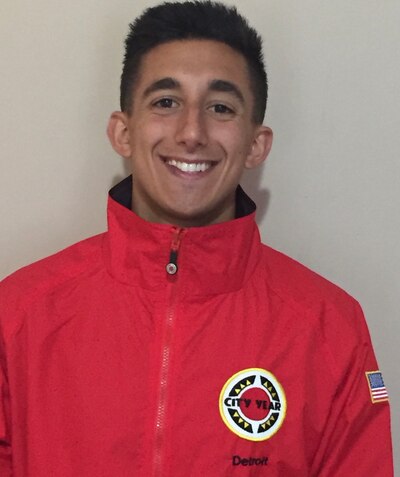
When he started tutoring in a class of fifth graders at Noble Elementary-Middle School, Bryan Aaron knew students’ English and math scores were shockingly low, with fewer than 10 percent passing the MSTEP in both subjects. But he was surprised to learn just how much factors outside of the classroom — food and housing insecurities, lack of transportation — affect students’ grades and attendance. In some cases students would be living with a parent one day, and an aunt or grandparent the next.
“It’s a huge factor in their ability to learn,” he said, noting that standardized tests don’t account for these issues. “What is not being taken into consideration is they haven’t had any sleep because they had to move in the middle of the night, and they haven’t had adequate nutrition.”
That helped him understand how much consistency matters for students. In one case, he helped a student with poor attendance figure out how to get to school since his father was using the family car at that time. Aaron arranged for him to ride the bus with an older sibling.
Now, Aaron, a recent college grad, is planning to apply to medical school. As he is working on his application, he’s considering conducting pediatric research on bioethics or the post-operative effects of opiates. He’s hoping to be accepted by a medical school in the region, and aspires to form a partnership between the district and the medical school to expose Noble students to the health sciences.
Blake Wilkes, 23, Detroit

After spending a school year working in an eighth-grade classroom at J.E. Clark Preparatory Academy, Wilkes has decided he’s not suited for a career as a classroom teacher in the long-term because he said he doesn’t “have the patience to deal with what [students] go through.” But he’s not leaving education altogether: The recent college graduate will return to do a second year of service, which corps members have an option to do, then he plans to pursue a graduate degree in psychology, with the goal of becoming a school guidance counselor for the Detroit district.
During his first year in the program, the night owl pushed himself to rise by 5:30 a.m. for the 12-hour workday ahead. He tutored students in core subjects, helped the classroom teacher with lesson plans, and coordinated after-school activities. He said that his work taught him what difficult home lives some students endure, and how much the resulting social-emotional issues impact their attitude and academic performance. He recalls a once-happy, high-achieving student who started having anger and behavioral issues after her mother died in the middle of the school year. He said he talked it through with her as best he could, and shed empathetic tears for the grieving student.
He also cried on the last day of school, recognizing how transformational the year had been, and how much he had grown and developed on a personal level.
“Seeing the kinds of stuff that the kids have to deal with everyday and how nobody’s on their side, it motivates me to work hard for them,” Wilkes said.
Brea Liggons, 25, Detroit
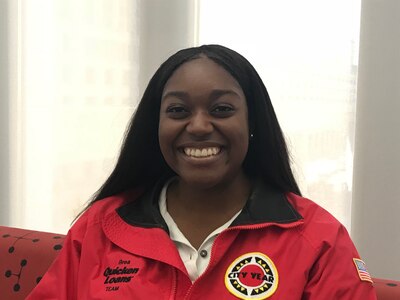
Working inside a fourth grade classroom at Gompers Elementary-Middle School, a pre-K–8 school in Detroit’s Brightmoor neighborhood, showed Liggons the staggering amount teachers have on their plates.
“Sometimes, it looks like teachers don’t care about their students, but they have one title and multiple roles they have to play every day,” she said. “They don’t have the capacity to sit down with the students one-on-one, but I did.”
Her Americorps year recalled her own challenging middle school experience, and that increased her resolve to help students with their grades, attendance, and social-emotional skill set.
“Everyday, we had to talk about their struggles, their improvement, and we really needed to pay close attention if they acted out of the ordinary,” she said. “That’s how we knew if they were having a problem like a parent passing away.”
Liggons, who plans to return to her graduate studies at Wayne State University before becoming a counselor of some kind in a district school, taught students how to set goals, and about the power of optimistic thinking.
“After awhile, they were begging to set their own goals. They were excited,” she said of their goals, such as deciding to let others go first, remembering to raise hands in class, and giving compliments to others and to themselves. “Just by doing that, we were literally able to watch some of our students grow immensely.”
Yazmin Gerardo, 22, Farmington Hills
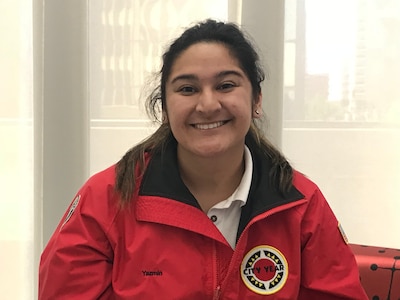
A self-described introvert, Gerardo found it overwhelming to work with fourth grade students at the Brenda Scott Academy because it was so large. The school in northeast Detroit, which serves pre-K to 8th graders, has more than 700 students. But she stretched, in an effort to understand and assist students.
“It wasn’t about me,” the native Detroit, who attended Detroit public schools, said. “At the end of the day, we were doing this, working with kids, and for good reason.”
Her year of service inspired her to pursue a career in teaching in the Detroit district.
“Having someone to constantly show up and root for them is what I want to do,” she said.
“They would come to me and say, ‘I wasn’t going to come to school today, but you promised me we would eat together at lunch, we could play a game or you would give me stickers.’”
Daniel Finegan, 25, Sterling Heights
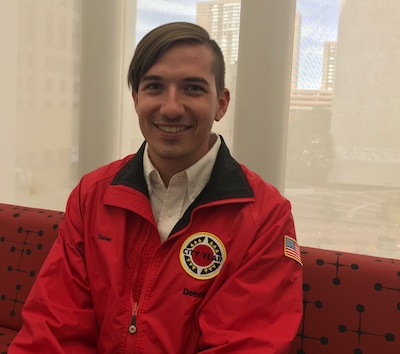
By the end of the school year, which he spent tutoring, mentoring and assisting the classroom teacher with seventh and eighth graders at Bethune Elementary-Middle School, Finegan was so set on teaching in a Detroit public school, he was already looking for a rental home in the Bagley neighborhood in northwest Detroit. Not only that, he’s had interviews with principals at four schools and has a contingency offer in hand.
“City Year has been my student teaching experience,” Finegan, who has a degree in social work from the University of Pittsburgh, said. His Americorps year solidified his decision to teach.
He is working toward his teacher’s certification, and if all goes according to plan, he’ll be ready to start teaching in the district when the 2018–19 school year begins.
Parker Schimler, 23, Royal Oak
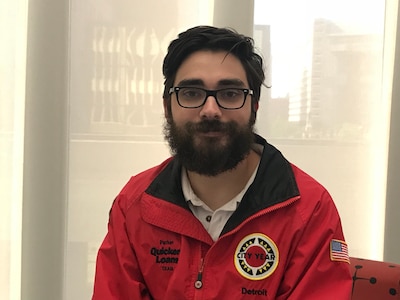
After his year of service in seventh and eighth grade classrooms at Gompers, Schimler understands exactly what it can be like when a school district struggles with teacher vacancies. One teacher he worked with had hip surgery, and substitute teachers were in and out of the classroom for most of the school year. It left students discombobulated and unfocused.
But that gave him an opportunity to take a deep dive into the lives of the students, discovering their strengths and helping them work on their weaker areas. He said he became particularly good at getting shy students to open up to him, and the ones who appreciated him most sometimes drew pictures for him. He was left with a strong appreciation for one student in particular, who set a goal to be a NBA player and an athletic shoe designer. That student made Schimler an origami athletic shoe.
“Without a teacher in the classroom, they weren’t getting the education I did and the education they deserve,” he said. “I worked with them in small groups and gave them worksheets to help them out the best I could.”

